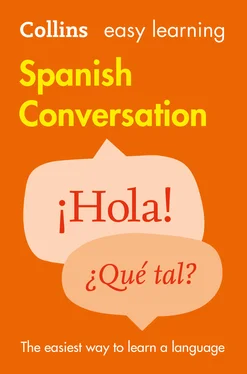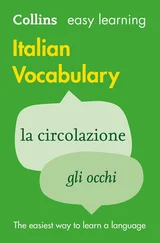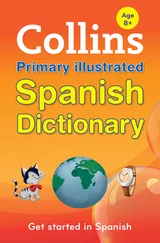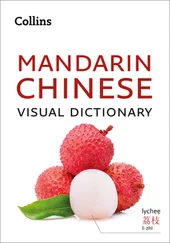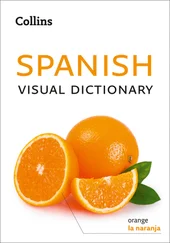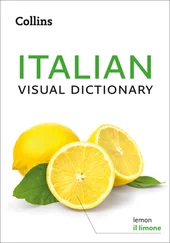1 ...6 7 8 10 11 12 ...18
| ¿ Te gustaríair a Cuenca? |
Would you liketo go to Cuenca? |
| ¿ Te gustaríacoger un taxi? |
Would you liketo get a taxi? |
| ¿ Te apeteceir a la playa? |
Do you fancygoing to the beach? |
| ¿ Te apetecedar un paseo? |
Do you fancygoing for a walk? |
To say Let’s…! , you can use ¡Vamos a…!and the infinitive form of the verb.
| ¡ Vamos aaparcar allí! |
Let’spark there! |
| ¡ Vamos acoger el ascensor! |
Let’stake the lift! |
| ¡ Vamos asubir hasta arriba en el teleférico! |
Let’sgo up to the top by cable car! |
To offer to do something, you can just use the present tense of the verb. You can also use voy a( I’m going to ) and vamos a( we’re going to ) and the infinitive.
| Yo comprolos billetes. |
I’ll buythe tickets. |
| Llamoa un taxi. |
I’ll calla taxi. |
| Yote llevoa la estación. |
I’ll takeyou to the station. |
| Yo voy a buscarteal aeropuerto. |
I’ll come and pick you upat the airport. |
| Nosotros te vamos a buscara la estación. |
We’ll pick you upat the railway station. |
When travelling around in an unfamiliar place, you’re quite likely to have to ask for directions or advice. Use perdone( excuse me ) or perdone, por favor( excuse me, please ) to attract someone’s attention before asking them a question.
| Perdone, por favor, ¿ cómo se llega alcentro? |
Excuse me, how do I get tothe city centre? |
| ¿ Cómo se llega ala estación de tren? |
How do we get tothe railway station? |
| ¿ Para ir alMuseo Picasso, por favor? |
How do I get tothe Picasso Museum, please? |
| ¿ Para ir ala estación de autobuses es por aquí? |
Is it this way tothe bus station? |
| Perdone, ¿ por dónde se vaa Segovia? |
Excuse me, which way do I gofor Segovia? |
| ¿ Voy bienpara el aeropuerto? |
Am I goingthe right way for the airport? |
| ¿ Vamos bienpara la autopista? |
Are we goingthe right way for the motorway? |
| ¿ Va ustedal aeropuerto? |
Do you goto the airport? |
| ¿ Para usteden la plaza de España? |
Do you stopin the plaza de España? |
| Perdone, ¿ dónde estála consigna? |
Excuse me, where’sthe left luggage office? |
| Por favor, ¿ dónde estála parada de taxis más cercana? |
Where’sthe nearest taxi rank, please? |
| ¿ Dónde estánlos servicios? |
Where arethe toilets? |
| ¿Sabe usted de dóndesalen los autobuses a Torrejón? |
Do you know wherethe buses to Torrejón leave from? |
| Perdone, ¿ dóndese compran los billetes, por favor? |
Excuse me, wheredo I buy a ticket, please? |
To ask which bus , which platform , which line , and so on, you use ¿Qué…?followed by a noun.
| ¿ Quélínea tengo que coger? |
Whichline do I need to take? |
| ¿De quévía sale el tren a Vilanova? |
Whichplatform does the train for Vilanova leave from? |
| ¿ Quéautobuses van al centro? |
Whichbuses go to the centre of town? |
You may need to find out what time something is due to happen at or what time your bus, train or flight is scheduled to go. To do this, you can use ¿A qué hora…?( What time…? ).
| ¿ A qué horaembarcamos? |
What timeare we boarding? |
| ¿ A qué horaempieza el metro? |
What timedoes the underground open? |
| ¿ A qué horallegamos a Valencia? |
What timedo we get to Valencia? |
| ¿ A qué hora saleel siguiente vuelo para Madrid? |
What time’sthe next flight for Madrid? |
| ¿ A qué hora saleel primer tren de la mañana para Tarragona? |
What time’sthe first train in the morning to Tarragona? |
On your travels, you may also need to find out if something is available in a particular area. Just use the same Spanish word, ¿Hay…?to ask Is there…? and Are there … ? .
| ¿ Hayuna gasolinera por aquí cerca? |
Is therea petrol station near here? |
| ¿ Hayuna parada de metro por aquí? |
Is therean underground station near here? |
| ¿ Haydescuentos para estudiantes? |
Is therea student discount? |
| ¿ Hayservicios en la estación de tren? |
Are thereany toilets at the train station? |
| ¿ Haytren directo hasta Barcelona? |
Is therea direct train to Barcelona? |
Don’t forget that there are two verbs which both mean to be in Spanish – serand estar. For information on when to use them, see here.
| ¿ Estálejos? |
Is itfar? |
| ¿ Estácerca de aquí? |
Is itnear here? |
| ¿ Estáen el centro de la ciudad? |
Is itin the town centre? |
| ¿ Estáocupado este asiento? |
Isthis seat free? |
| ¿ Estáincluido el seguro? |
Isthe insurance included? |
| ¿ Esésta la parada para el museo? |
Isthis the right stop for the museum? |
| Perdone, ¿ eséste el tren que va a Toledo? |
Excuse me, isthis the train for Toledo? |
To ask how much something is, use ¿Cuánto cuesta…?or ¿Cuánto vale…?( How much is…? ) with a singular noun and ¿Cuánto cuestan…?or ¿Cuánto valen…?( How much are…? ) with a plural noun.
Читать дальше
